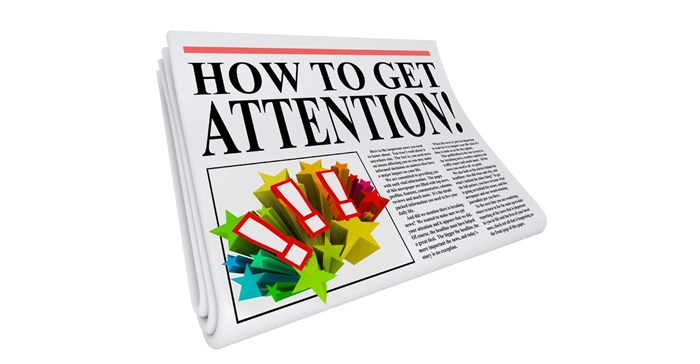The basic rule is that there is no basic rule. Advertising is a dynamic process after all, and the method of construction will change from one product/campaign to another.
In the following paragraphs I'll mainly be referring to print advertising, but the same applies across the entire spectrum of media types.
It's important to remember that the message requires empathy towards the receiver. Like any good salesman, it should not be seen as “selling” but as “buying”. Products are not “sold”, they are “bought”.
We talk about advantages, benefits and help. We promote solutions and not problems.
Although we don't always talk about price, we talk about value.
Okay, so first things first. On the assumption that our media plan has put our advertisement in the right environment, the first thing to do is grab attention. And that means, in most cases, headlines.
Daniel Starch said “...the attention value (headlines) of an advertisement is approximately twice as important as the actual convincingness of the advertisement itself.”
There are various estimates as to how important the headline is (or the headline visual – it's the same thing) and they should all conclude that it's 100% important. The reason will be obvious to most people; if you don't grab a reader's attention then even the most convincing body copy will not be read and, therefore, the ad will fail.
Every copywriter must begin with exactly the same conviction as a journalist, which is basically that the reader is simply not interested in what you have to say. So the writer has to work very hard in securing the reader's attention – and holding on to it.
Journalists do the same thing with the headlines of their stories.
Many writers begin with the headline and then write the body copy, but it can sometimes be the other way around; write the body copy first – out of which will come the headline.
I've discussed elsewhere how important research (or pre-testing) is and it applies equally to headlines – and you might be surprised by the results. For example, look at the subtle differences in the following two headlines, which were tested many years ago;
FOR THE WOMAN WHO IS OLDER THAN SHE LOOKS
and
FOR THE WOMAN WHO LOOKS YOUNGER THAN SHE IS
They both say the same thing but, and to my astonishment, the first one apparently says it better and proved so when both headlines were researched in a split-run test.
Have you ever noticed the way you (and others) enter a room, say at a cocktail party when it's fairly crowded? The chances are that you'll head for the bar (unless you've spotted someone you want to talk to first) and the way you'll get to the bar (on the other side of the room) is to walk clockwise around the crowd. Try it at the next bash you go to. This is typical of a very high percentage of people.
Not surprisingly then, people tend to read advertisements in much the same way; left to right, top right to bottom-left and then bottom-left to bottom-right. Just like the letter “Z”.
So if that's the way people are going to read it, it makes sense to design your advertising around this “Z” shape.
Next time I'll cover type, photography, illustrations etc.
Read my blog (brewersdroop.co.za) or see what other amazing things we do at brewers.co.za
*Note that Bizcommunity staff and management do not necessarily share the views of its contributors - the opinions and statements expressed herein are solely those of the author.*



























